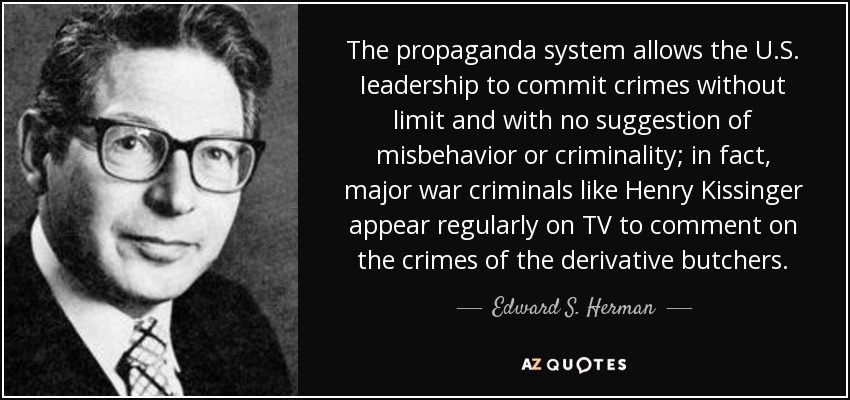Manufacturing consent is an important concept originally explored and made popular by the economist Edward S. Herman and the professor Noam Chomsky in 1988, through their book Manufacturing Consent: The Political Economy of the Mass Media. The book investigates how the media influences the public’s views and opinions to suit economic and political objectives by working within the structures of societal power. Media organisations are easily able to manipulate the public’s opinions to suit the goals and interests of the rich and powerful such as governments and large corporations, rather than the general public.
Herman and Chomsky did introduce the propaganda model of communication within their book which states that ownership, advertising, sourcing, flak (criticism used to penalise the media), and anti-communism are the five factors that control content from the media. Collectively, these filters restrict criticism and intelligent thought and encourage narratives that uphold the status system by manipulating public opinion to suit the interests of the powerful.

Now IŌĆÖll briefly explain the propaganda model:
Ownership: Large corporations with economic and political interests tend to own media companies. Content that supports the beliefs and objectives of the parent companies is encouraged by this ownership arrangement.
Advertising: Media outlets frequently develop content that caters to the interests and needs of sponsors in order to draw them in, avoiding subjects that can compromise the income generated by advertisements.
Sourcing: Governments, companies, and professionals are major sources of information for news organisations, which dominate the media and are viewed as reliable, whilst the general public are rarely used as voices.
Flak: Topics that can cause criticism or ŌĆśflakŌĆÖ (the policing of the media) from influential organisations are avoided by media outlets, such as financial pressure or legal action which encourage the media to avoid coverage that would offend those in power. Flaks are very destructive to the media.
Anti-communism: By representing different points of views as damaging or unreliable, national or political biases are sometimes used to manipulate the public’s opinion to support those in elite positions.
Herman and Chomsky argue that through these factors, the media no longer functions as a neutral source of information but rather as an instrument to support the interests of societally powerful groups. The media carefully pushes the general publicŌĆÖs opinions to agree with the ideas and actions that donŌĆÖt really benefit them, which is how manufacturing consent moulds the public opinion.
The K-pop industry is a significant example of how they manufacture consent in digital media. K-pop groups are able to influence the fansŌĆÖ impressions through carefully chosen content, the fan base itself and the interactions they have on social media. On the outside, these idols seem perfect and flawless as their companies train them to behave and act a certain way on social media platforms like YouTube and Instagram or even when theyŌĆÖre around fans and interacting with them. Interactive events build fan loyalty, whilst social media platforms urge fans to interact with a variety of content creating a feeling of trust. This benefits these companies as it generates the purchasing of merchandise and music, making the industry very money hungry.

Bennett, J.R., Herman, E.S. and Chomsky, N. (1989) “Manufacturing consent: the political economy of the mass media.,’ Contemporary Sociology a Journal of Reviews.
Macnab, J. (2017) Back to the 80s #3: Manufacturing consent. https://anatomyofteaching.wordpress.com/2017/01/26/back-to-the-80s-3-manufacturing-consent/.
Mullen, A., (2017) ŌĆ£The Propaganda Model after 20 Years: Interview with Edward S. Herman and Noam ChomskyŌĆØ, Westminster Papers in Communication and Culture
A Propaganda Model, by Noam Chomsky (Excerpted from Manufacturing Consent). https://chomsky.info/consent01/.


AMAZING
I like how you start off your post by jumping straight into what Manufacturing Consent means and it’s the origin. I also like how you then link it to the propaganda model and link the propaganda model to the K-Pop industry, which is a really good and clear example. One thing I think you could expand on a bit more is how the K-pop industry influences us and what to buy, like how they promote themselves to the masses. Overall really good!